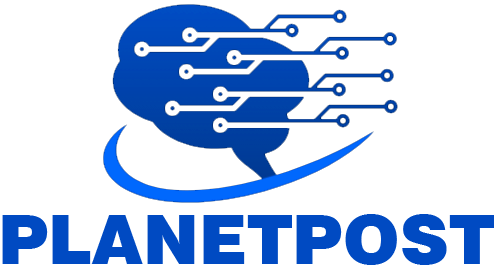After the rise of generative AI, artificial intelligence is on the brink of another significant transformation with the advent of agentic AI. This change is driven by the evolution of Large Language Models (LLMs) into active, decision-making entities. These models are no longer limited to generating human-like text; they are gaining the ability to reason, plan, tool-using, and autonomously execute complex tasks. This evolution brings a new era of AI technology, redefining how we interact with and utilize AI across various industries. In this article, we will explore how LLMs are shaping the future of autonomous agents and the possibilities that lie ahead.
The Rise of Agentic AI: What Is It?
Agentic AI refers to systems or agents that can independently perform tasks, make decisions, and adapt to changing situations. These agents possess a level of agency, meaning they can act independently based on goals, instructions, or feedback, all without constant human guidance.
Unlike conventional AI systems limited to fixed tasks, agentic AI is dynamic. It learns from interactions and improves its behavior over time. A essential feature of agentic AI is its ability to break down tasks into smaller steps, analyze different solutions, and make decisions based on various factors.
For instance, an AI agent planning a vacation could assess the weather, budget, and user preferences to recommend the best tour options. It can consult external tools, adjust suggestions based on feedback, and refine its recommendations over time. Applications for agentic AI span from virtual assistants managing complex tasks to industrial robots adapting to new production conditions.
The Evolution from Language Models to Agents
Traditional LLMs are powerful tools for processing and generating text, but they primarily function as advanced pattern recognition systems. Recent advancements have transformed these models, equipping them with capabilities that extend beyond simple text generation. They now excel in advanced reasoning and practical tool usage.
These models can formulate and execute multi-step plans, learn from past experiences, and make context-driven decisions while interacting with external tools and APIs. With the addition of long-term memory, they can retain context over extended periods, making their responses more adaptive and meaningful.
Together, these abilities have opened new possibilities in task automation, decision-making, and personalized user interactions, triggering a new era of autonomous agents.
The Role of LLMs in Agentic AI
Agentic AI relies on several core components facilitating interaction, autonomy, decision-making, and adaptability. This section explores how LLMs are driving the next generation of autonomous agents.
- LLMs for Understanding Complex Instructions
For agentic AI, the ability to understand complex instructions is crucial. Traditional AI systems often require precise commands and structured inputs, limiting user interaction. LLMs, however, allow users to communicate in natural language. For example, a user can say, “Book a flight to New York and arrange accommodation near Central Park.” LLMs grasp this request by interpreting location, preferences, and logistics nuances. The AI can then carry out each task—from booking flights to selecting hotels and arranging tickets—while requiring minimal human oversight.
- LLMs as Planning and Reasoning Frameworks
A key feature of agentic AI is its ability to break down complex tasks into smaller, manageable steps. This systematic approach is vital for solving more significant problems effectively. LLMs have developed planning and reasoning capabilities that empower agents to perform multi-step tasks, much like we do when solving math problems. Think of these capabilities as the “thinking process” of AI agents.
Techniques such as chain-of-thought (CoT) reasoning have emerged to help LLMs achieve these tasks. For example, consider an AI agent assisting a family save money on groceries. CoT allows LLMs to approach this task sequentially, following these steps:
- Assess the family’s current grocery spending.
- Identify frequent purchases.
- Research sales and discounts.
- Explore alternative stores.
- Suggest meal planning.
- Evaluate bulk purchasing options.
This structured method enables the AI to process information systematically, like how a financial advisor would manage a budget. Such adaptability makes agentic AI suitable for various applications, from personal finance to project management. Beyond sequential planning, more sophisticated approaches further enhance LLMs’ reasoning and planning abilities, allowing them to tackle even more complex scenarios.
- LLMs for Enhancing Tool Interaction
A significant advancement in agentic AI is the ability of LLMs to interact with external tools and APIs. This capability enables AI agents to perform tasks such as executing code and interpreting results, interacting with databases, interfacing with web services, and managing digital workflows. By incorporating these capabilities, LLMs have evolved from being passive processors of language to becoming active agents in practical, real-world applications.
Imagine an AI agent that can query databases, execute code, or manage inventory by interfacing with company systems. In a retail setting, this agent could autonomously automate order processing, analyze product demand, and adjust restocking schedules. This kind of integration expands the functionality of agentic AI, enabling LLMs to interact with the physical and digital world seamlessly.
- LLMs for Memory and Context Management
Effective memory management is vital for agentic AI. It allows LLMs to retain and reference information during long-term interactions. Without memory, AI agents struggle with continuous tasks. They find it hard to maintain coherent dialogues and execute multi-step actions reliably.
To address this challenge, LLMs use different types of memory systems. Episodic memory helps agents recall specific past interactions, aiding in context retention. Semantic memory stores general knowledge, enhancing the AI’s reasoning and application of learned information across various tasks. Working memory allows LLMs to focus on current tasks, ensuring they can handle multi-step processes without losing sight of their overall goal.
These memory capabilities enable agentic AI to manage tasks that require ongoing context. They can adapt to user preferences and refine outputs based on past interactions. For instance, an AI health coach can track a user’s fitness progress and provide evolving recommendations based on recent workout data.
How Advancements in LLMs Will Empower Autonomous Agents
As LLMs continue to advance with interaction, reasoning, planning, and tool usage, agentic AI will become increasingly capable of autonomously handling complex tasks, adapting to dynamic environments, and collaborating effectively with humans across various domains. Some of the ways AI agents will prosper with the advancing abilities of LLMs are:
- Expanding into Multimodal Interaction
With the growing multimodal capabilities of LLMs, agentic AI will engage with more than just text in the future. LLMs can now incorporate data from various sources, including images, videos, audio, and sensory inputs. This allows agents to interact more naturally with different environments. As a result, AI agents will be able to navigate complex scenarios, such as managing autonomous vehicles or responding to dynamic situations in healthcare.
- Improved Reasoning Capabilities
As LLMs enhance their reasoning abilities, agentic AI will thrive in making informed choices in uncertain, data-rich environments. It will evaluate multiple factors and manage ambiguities effectively. This capability is essential in finance and diagnostics, where complex, data-driven decisions are critical. As LLMs grow more sophisticated, their reasoning skills will foster contextually aware and thoughtful decision-making across various applications.
- Specialized Agentic AI for Industry
As LLMs progress with data processing and tool usage, we will see specialized agents designed for specific industries, including finance, healthcare, manufacturing, and logistics. These agents will handle complex tasks such as managing financial portfolios, monitoring patients in real-time, adjusting manufacturing processes precisely, and predicting supply chain needs. Each industry will benefit from agentic AI’s ability to analyze data, make informed decisions, and adapt to new information autonomously.
The progress of LLMs will significantly enhance multi-agent systems in agentic AI. These systems will comprise specialized agents collaborating to tackle complex tasks effectively. With LLMs’ advanced capabilities, each agent can focus on specific aspects while sharing insights seamlessly. This teamwork will lead to more efficient and accurate problem-solving as agents simultaneously manage different parts of a task. For example, one agent might monitor vital signs in healthcare while another analyzes medical records. This synergy will create a cohesive and responsive patient care system, ultimately improving outcomes and efficiency in various domains.
The Bottom Line
Large Language Models rapidly evolve from simple text processors to sophisticated agentic systems capable of autonomous action. The future of Agentic AI, powered by LLMs, holds tremendous potential to reshape industries, enhance human productivity, and introduce new efficiencies in daily life. As these systems mature, they promise a world where AI is not just a tool but a collaborative partner, helping us navigate complexities with a new level of autonomy and intelligence.



